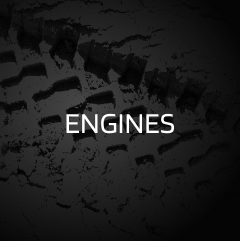 CCA Spares
CCA Spares
Piston Rings Unveiled – Sealing the Power in Engines
As our journey through the intricate components of internal combustion engines continues, our focus now turns to a critical element that ensures the efficiency and longevity of the engine: piston rings. Join us in unraveling the significance of piston rings, their functions, types, and the role they play in sealing the power within the engine.
Piston Rings and Their Functions:
Piston rings are circular bands that encircle the outer diameter of a piston. Dive into their multifaceted functions, including forming a seal between the cylinder and piston, transferring heat away from the piston, and regulating the distribution of oil for lubrication.
Compression Rings:
The primary role of compression rings is to seal the combustion chamber, preventing the escape of high-pressure gases during the power stroke. Explore the design considerations that enable compression rings to withstand the intense heat and pressure generated during combustion.
Oil Control Rings:
Oil control rings are tasked with regulating the amount of oil that reaches the cylinder walls. Delve into their design, which includes tiny openings and channels, allowing controlled oil flow for lubrication without excessive oil consumption. Understand how these rings contribute to maintaining optimal cylinder wall lubrication.
Wiper Rings:
In certain engine designs, wiper rings are employed to enhance the sealing capabilities of compression rings. Explore how wiper rings remove excess oil from the cylinder walls during the piston’s downward stroke, contributing to improved combustion efficiency.
Materials and Coatings:
Piston rings are subject to harsh conditions, and their materials play a crucial role in durability. Explore the materials commonly used, such as cast iron, stainless steel, or advanced alloys. Additionally, uncover the role of coatings like molybdenum and nitrided surfaces in enhancing wear resistance.
Installation and Tension:
Proper installation and tension of piston rings are essential for optimal performance. Learn about the techniques employed during the installation process, including gap orientation and tension adjustments. Understand how proper tension ensures effective sealing without excessive friction.
Symptoms of Ring Wear:
Over time, piston rings can experience wear, leading to symptoms such as reduced compression and increased oil consumption. Explore the signs of ring wear, including blue smoke from the exhaust, poor engine performance, and the importance of regular maintenance to address these issues.
Breaking in Piston Rings:
New engines or those that have undergone a rebuild require a breaking-in period for the piston rings. Delve into the recommended practices for breaking in piston rings, including gradual increases in engine load and avoiding prolonged periods of idling.
Advancements in Ring Technology:
As automotive technology advances, so does piston ring technology. Explore innovations such as low-tension and gapless piston rings, which aim to reduce friction, improve efficiency, and contribute to lower emissions and enhanced fuel economy.
In conclusion, piston rings stand as guardians of engine efficiency and reliability, playing a vital role in sealing combustion, regulating oil, and facilitating optimal performance. This article has provided a comprehensive exploration of their functions, types, and the factors influencing their design. Stay tuned for the next installment as we continue our journey through the intricate components of internal combustion engines.

